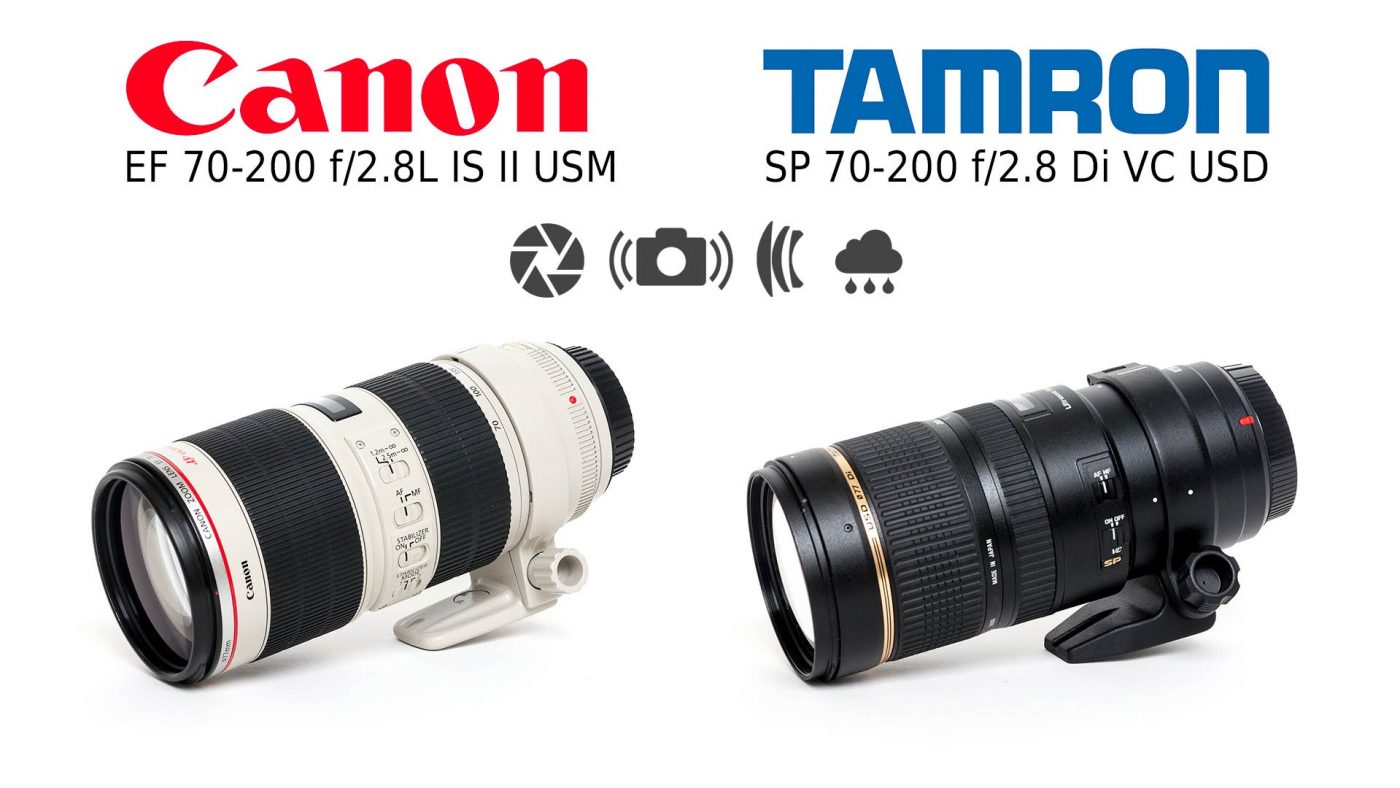Tamron SP 70-200 f/2.8 Di VC USD vs Canon EF 70-200 f/2.8L
I hope that you’ll forgive me that this video is not quite as satisfying as my previous efforts. It was not for lack of trying. After taking thousands of test shots through the Canon and Tamron lenses, I discovered that the Canon 70-200 f/2.8L IS II that I was using was flawed; perhaps damaged, perhaps in need of calibration… but in any case, it was not operating as it should.
Watch Part 2 of this comparison, here.
The Lenses
The Canon 70-200 f/2.8L IS II is regarded as the sharpest and probably overall best professional zoom lens in its class. Released in 2010, it’s a relatively new design and comes with a hefty price tag. Currently at Amazon.com it costs $1999. At B&H it’s also $1999 with current rebates.
The Tamron 70-200 f/2.8 Di VC USD is an even newer design, having reached the market just last year. Tamron has long had a strong reputation for great optics at reasonable prices. Tamron’s 70-200 f/2.8 VC USD currently costs $1499 at Amazon and at B&H its $1499 plus a $100 mail-in rebate, though the price can fluctuate depending on rebates being offered. With or without rebates, the lens costs about $500-800 less than the Canon.
True Focal Length
I have heard reports that the Tamron lens does not provide a true 200mm focal length at the long end of it’s zoom range, and this can be misleading. I’ll provide a complete test in Part 2 of this video comparison.
For now, though, let me explain why this is more complicated than it sounds at first. When focused at infinity, the Tamron does provide an equivalent focal length to the Canon at about 200mm.
The phenomenon in question is referred to as “breath”, and it’s a problem that occurs when a lens loses focal length as it focuses on subjects that are closer to its minimum focal distance. So, while the Tamron is a 200mm when focused far away, it might be less than 200mm when focused close up. This is not an uncommon problem, even with high quality lenses: the Nikon 70-200 f/2.8 VR II breaths down to 140mm from 200mm when focused close.
In the video above, I intentionally avoided this problem while making my resolution tests by focusing both lenses on very distant subjects, and as you’ll see in the video (images are 100% crops) and below, the difference in focal length is negligible; the lenses focal lengths are identical for all practical purposes at that distance.
Autofocus Performance
When shooting sports in low light, I found that both lenses performed very well. The focusing motors are both fast, and tracking was equally accurate. I did find, however, that when using image stabilization, the Tamron suffered a noticeable lag between the time that the VC started to engage and the time focusing began. With a little practice, I was able to anticipate the lag and work around it without too much trouble, but it is something to be aware of.
Image Quality
If you’d like to examine a few of the RAW images from these tests yourself, you can download them by clicking on the link below:

In terms of resolution, I expected the Canon lens to out-perform the Tamron, just as its counterpart did (however slightly) when I compared the 24-70mm lenses. However, after comparing numerous images, I found that the Canon was consistently blurry compared to the Tamron, and in fact, it was blurry compared to my older Canon 70-200mm f/2.8L (non-IS). Since I know that a good copy of the IS II is always a bit sharper than the non-IS, I could only conclude that I’d received a bad copy of the IS II for testing.
The images below show how dramatic the image quality differences could be. Here are some thumbnails of two images shot at 70mm at f/2.8.

In the center of the image, the difference is not especially dramatic, though it is visible.


Towards the corners, though, the Canon looks terrible.


Support These Lens Comparisons!
If you’d like to see more comparison videos like this one, there are two things you can do to help!
First, if you purchase one of the lenses, please do it through one of our links below, especially Amazon. It won’t cost you any extra, but it will help us.
Second, if you are located in the USA and have new or expensive lenses that you’d like to make available for testing, please send us an email. Borrowlenses.com doesn’t carry everything that we’d like to test. Thanks!




